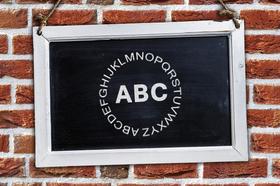Diversity in Private Schools: Are We Making Progress?
Private schools often market themselves as bastions of academic excellence, smaller class sizes, and enriched opportunities. But when it comes to diversity in private schools, the record is more mixed. While many institutions have made visible efforts toward inclusion, structural obstacles, backlash against DEI initiatives, and persistent inequality mean progress remains uneven. This article examines where private schools have moved forward, where they still lag, and what meaningful progress would look like.
Why Diversity Matters in Private Schools
The rationale for greater diversity goes beyond optics:
Equity and access. Private education has historically favored families with means, excluding lower-income and marginalized groups.
Enriched learning environments. Students benefit from exposure to peers with different backgrounds, perspectives, and life experiences.
Preparation for a plural society. Whether in college, work, or civic life, graduates must work across cultural and racial lines.
Given those stakes, private schools—typically less regulated than public ones—bear a responsibility if they are to reflect a fuller social mandate rather than merely serving elites.
The Current State: Data & Trends (2025)
Enrollment Patterns and Segregation
In the U.S., 65 % of private school students are White, even though only 47 % attend traditional public schools. Pew Research Center
Research indicates that White and Asian students enroll in private schools at about twice the rate as Black and Latino students. Center for Education Policy Analysis
A ProPublica tool allows users to see how “segregated” individual private schools are by race or ethnicity. ProPublica
These patterns confirm that many private schools remain racially and socioeconomically homogeneous—especially in high-fee and highly selective institutions.
Institutional Commitments & DEI Staffing
In the 2023–2024 State of Independent School Diversity Practice study, many private schools had diversity officers, and a majority of those practitioners were women; 36 % were between 41 and 50 years old.
Yet some elite networks have pulled back on visible DEI events, citing “evolving political landscapes.”
While commitment is evident in many schools, backlash—especially in polarized contexts—can erode momentum.
Recruitment and Retention Strategies
Private schools invest in outreach, scholarships, and partnerships to broaden their candidate pools. For example:
Targeted recruitment into underrepresented communities
Sliding tuition scales or robust financial aid
Partnerships with feeder public or charter schools
Intentional admissions policies that consider socioeconomic as well as racial factors Blackbaud
But recruitment is only half the battle. Retention depends on inclusive culture, mentorship, curriculum, and day-to-day support—areas where many schools struggle.
Progress So Far: What Has Improved
More Visible Leadership & Structures
Today, many private schools have formal DEI offices, oversight committees, and dedicated staff—resources that were rare 20 years ago. These roles help sustain accountability and institutional memory beyond individual champions.
Broader Definitions of Diversity
School diversity efforts now more commonly encompass socioeconomic status, disability, LGBTQ+ identity, and international background, not just race or ethnicity. This broader lens helps more students feel included and supported.
Scholarship and Aid Models
Some schools are going beyond token aid to “percentage of students on full aid” goals, enabling significantly increased access for lower-income families. That shift demonstrates intentionality rather than reactive inclusion.
Inter-School Collaboration & Networks
Organizations such as independent school associations often offer DEI training, peer review, and benchmarking. These networks help schools learn from one another and push standards upward.
Persistent Challenges: Why Progress Is Slow
Cost & Economic Barriers
High tuition remains the most formidable barrier. Even “affordable” private schools often exclude middle- to lower-income families. Without consistent, deep financial aid, diversity remains aspirational.
Resistance and Political Pushback
Diversity and inclusion programs—especially under the banner of “DEI”—have become politically charged. Some institutions have canceled events, faced pressure from boards or donors, or quietly rolled back initiatives. New York Post
Tokenism and Surface-Level Change
Some schools adopt DEI language or host occasional events, but fail to embed diversity into admissions, hiring, curriculum, or governance. This makes any gains fragile and superficial.
Internal Culture and Climate
Simply admitting a more diverse student body is not enough. Without inclusive pedagogy, mentorship, student support, and meaningful cross-cultural interactions, underrepresented students may feel alienated or marginalized.
Data Gaps & Transparency
Unlike public schools, many private schools are under no obligation to publish demographic data. That opacity makes it harder to track trends or hold institutions accountable. Tools like ProPublica’s database help but depend on voluntary reporting. ProPublica
Case Examples of Meaningful Progress
Manhattan Country School (NYC). There is no racial majority; 70 % of students receive financial aid.
NAIS member schools have participated in sharing best practices around recruitment, retention, and inclusion.
These institutions show what is possible when diversity is built into mission and practice—not just occasional programming.
What Would Real Progress Look Like?
To say “yes, we are making progress” without overclaiming, it helps to define indicators of meaningful change. Private schools might aspire to:
| Indicator | Baseline / Barrier | Goal |
|---|---|---|
| Student demographic balance | Heavily skewed toward white, affluent families | Student body reflect region or metropolitan diversity |
| Accessibility of aid | Aid is marginal or last-minute | 10–20 %+ of students on full or generous aid packages |
| Retention and belonging | Higher attrition among underrepresented students | Equal retention rates across groups |
| Faculty and leadership diversity | Low minority representation | Faculty and leadership proportionate to student diversity |
| Curriculum & pedagogy | Eurocentric, traditional | Culturally responsive, inclusive, reflective of multiple narratives |
| Transparency | Minimal demographic disclosure | Annual published demographics, goals, results |
Progress should be assessed over years—not quarters—and anchored in humility, listening, and continuous improvement.
Forward Moves: Strategies for Acceleration
Deep financial commitment. Consistent, multi-year financial aid means more than one-off grants.
Holistic admissions. Weight socioeconomic, geographic, and potential factors—not only test scores.
Inclusive curriculum design. Embed diverse perspectives in every discipline.
Mentoring & affinity networks. Peer groups and mentorship keep students connected and supported.
Ongoing professional development. Training alone is not enough—coaching and accountability are critical.
Data transparency & accountability. Publish goals and results publicly to build trust and pressure improvement.
Coalition building. Partner with public, charter, and community schools to share access and ideas.
With these steps, diversity becomes not an add-on but a core institutional value.
Are We Making Progress?
I would argue: yes, slowly and unevenly. Some private schools are breaking new ground in aid, leadership, and inclusive culture. But for every exemplar, many lag behind due to cost structures, political resistance, and institutional inertia.
To truly move the needle, private schools must shift diversity from marketing language to structural commitment—rooted in mission, resourced in budgets, measured in outcomes, and sustained through turnover. The question is not whether progress is happening, but whether we can accelerate it, sustain it, and spread it beyond isolated pockets.











